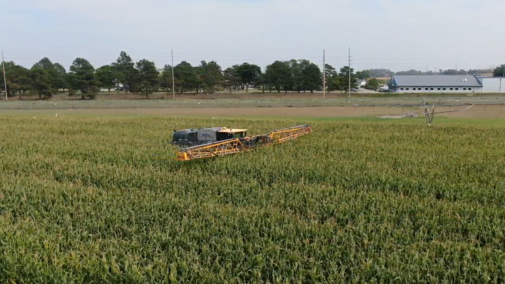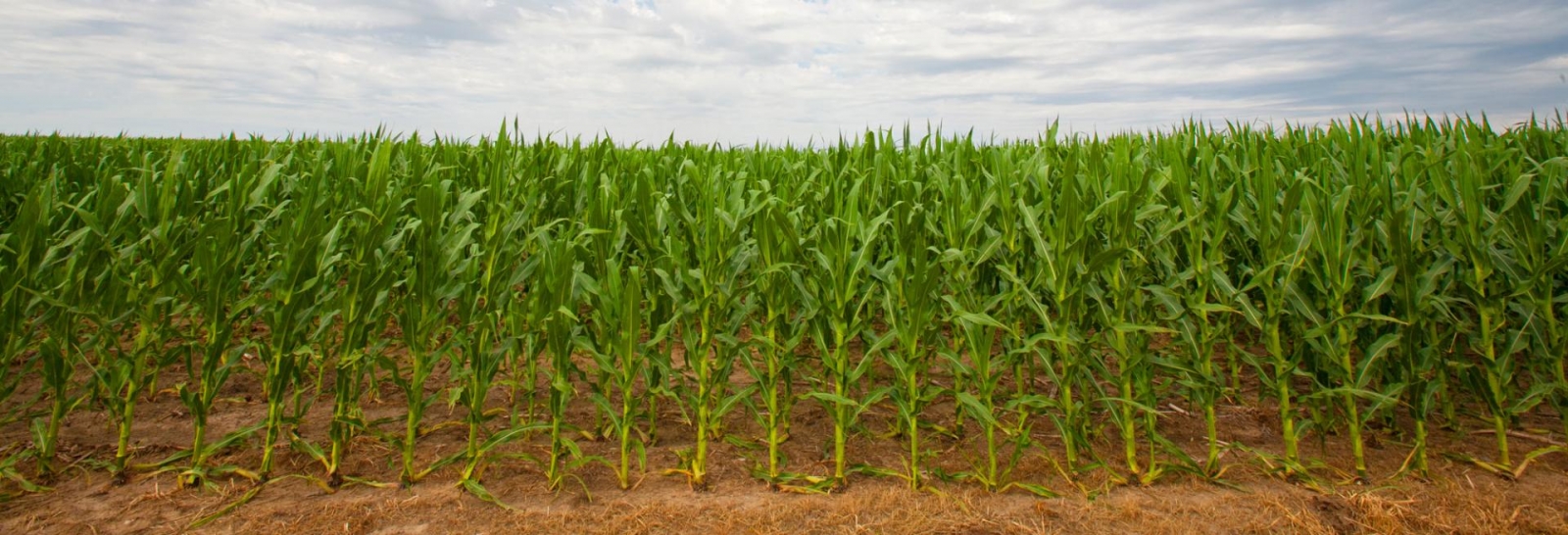Key Takeaways
Cover Crop Establishment: Its emergence and growth prior first hard frost is tied to decent soil moisture at interseeding time.
Ongoing Project: Highboy Cover Crop Interseeding Project (HiCCIP) is moving to the fourth year with interesting findings on cover crop establishment and soil nitrate concentration.
Introduction
Cover crops are a recognized method for improving soil health by reducing soil erosion, increasing soil organic matter, and improving soil structure. Moreover, cover crops can also improve water quality by capturing excess soil residual nitrate that can potentially leach into the groundwater.
While cover crops are growing in popularity in Nebraska, there are many challenges that limit widespread adoption. One example is the narrow window for cover crop establishment from harvest to first (hard) frost. To address these challenges, the Highboy Cover Crop Interseeding Project (HiCCIP) was initiated by the University of Nebraska-Lincoln in 2022. This is a collaborative effort with the Nebraska Department of Environment and Energy (NDEE) and various Natural Resources Districts (NRDs), including the Lower Platte North NRD, Lower Platte South NRD and the Upper Big Blue NRD. The project aims to address barriers to cover crop adoption and explore their impact on water quality.
Fall 2024 Interseeding
In the 2024 season, 1,100 acres across 11 farmer fields were interseeded at R5.5 corn stage. At R5.5 corn growth stage, plants are approaching maturity with dry leaves permitting sunlight to reach the soil surface, which allows cover crop emergence and growth prior to corn harvest and first hard frost. During the interseeding timing in the fall 2024, the weather did not show rain forecasted, thus the farmers were asked to irrigate at least 0.5-inches after interseeding to secure cover crop emergence and growth. Fields were either broadcast interseeded with cereal rye or a mix of cereal rye, rapeseed and turnip, at a seeding rate of 70 lb/ac.
The project also supplied cover crop seeds for 800 acres across 10 fields drilled after soybean harvest for the fields under the three-year protocol for corn-soybean-corn rotation. The seeds supplied to be drilled after soybeans were winter wheat or mix of cover crops (winter wheat, turnip and rapeseed). R5 Interseeding started on Aug. 25, 2024, and ended Sept. 15, 2024.
Figure 1 shows the location of the on-farm research fields interseeded at R5 corn growth stage and drilled after soybean harvest.
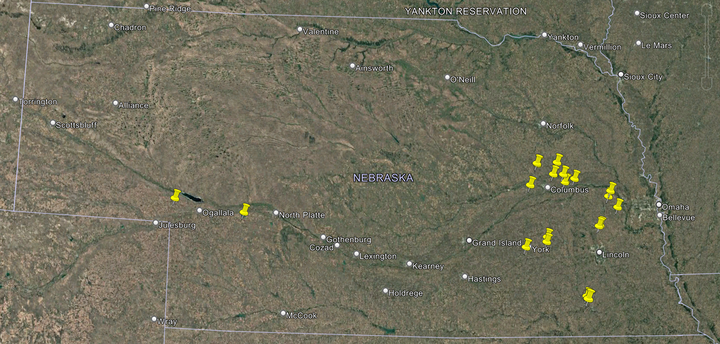
Preliminary Results — Fall 2024
During fall 2024, cover crop stand counts were collected mid-November from eight out of 21 fields following corn and soybean harvest. The fields in this report were seeded with cereal rye on corn (R5 interseeding) and winter wheat after soybean (drill post-harvest).
The stand count measurements were then converted to percent of living plants per square foot, illustrated in Figures 2 and 3, showing emerged plants (%) at R5 interseeding in corn fields and on drill-seeded cover crops post-harvest in soybean fields. The expected number of living plants for the R5 interseeded fields is 32 plants per square foot at 70 lb/ac seeding rate. For the post-soybean harvest drilled fields, the expected number of living plants is 23 per square foot at 50 lb/ac seeding rate. On the two soybean fields, the highest winter wheat emergence was 90% (Figure 3).
On the corn fields, the highest percentage of emerged seeds was observed at the field F4 with 13% (Figure 2). The low percentage of emerged seedlings at the R5 interseeded cereal rye into standing corn may be due to the drier weather conditions during the interseeding timing in 2024 (August-September). According to the National Weather Service, in 132 years of records, September 2024 in Nebraska was the driest September in history. Thus, cover crop germination and establishment might be negatively impacted due to dry conditions after interseeding if adequate irrigation was not provided.
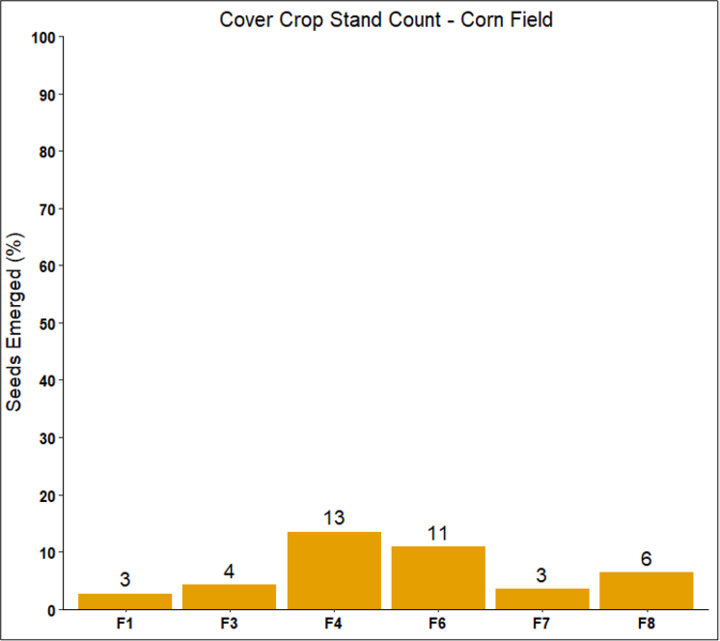
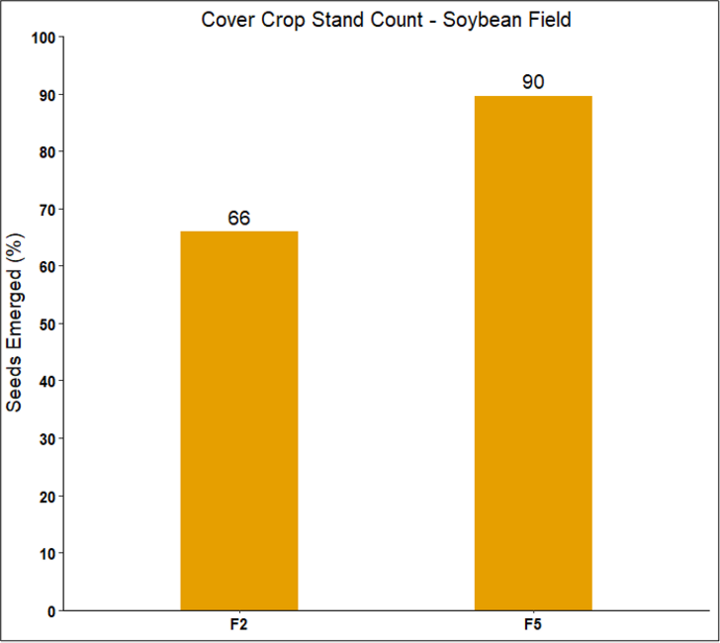
Our team will follow up with spring 2025 cover crop biomass across all sites interseeded at R5 corn growth stage and drilled after soybean harvest to estimate biomass accumulation and collect soil samples for nitrate analysis.
Acknowledgements
We would like to thank our collaborating farmers, the Lower Platte North, the Lower Platte South and Upper Big Blue NRDs for providing their fields and/or technical support for this project.
Funding
Funding provided by the Nebraska Department of Environmental and Energy Nonpoint Source Pollution Program and USDA-NIFA.
Related Articles: |
